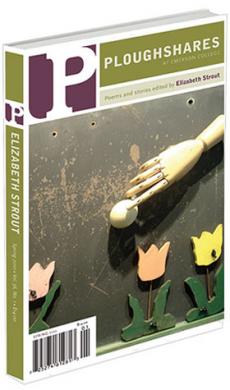Rev: Restoration: Poems
If restoration is, according to Nietzsche, an act of revenge, then Christina Pugh in her second book enacts vengeance that seems devoid of fear, primarily because the object of this vengeance remains a mystery, beyond narrative construction. Pugh’s Restoration: Poems defies and resists, as well as exposes, our Pavlovian desires for the explicatory and the voyeuristic. This is a restoration "free of the X-ray’s zoom," if by X-rays she means the fleshing out of telling. Instead, Pugh’s Restoration sublimates revenge into a language that is the "densest vessel" for one’s words, where one returns to a previous dwelling, over and over, until a lyric, a song, is what remains.
The book’s three sections invoke Freud’s interpretation of dreams, but only as a backdrop, a template for departure from exposure and certainty. The first section, "Dream Work," attempts a reconstruction of the poet’s pathos and memories by stitching together reality and dream narratives, Plato and Beethoven (as well as dance arabesques), "into fractals" (seemingly infinite and chaotic small repeating patterns of structure and sound that accumulate into recognition of, or identification with, a larger mysterious symmetry, which is immediately felt by the reader, even when not understood in a traditional analytical sense). In that regard, the dream work here is the dream of a triumphant poem. The more poems one reads in this book, the more one rereads the poems; the more one embraces the pleasure and wisdom Pugh asks us to engage in. "Let’s not ask how it was made– / this swan in a blue window, / swimming in snow. It’s the word beneath / that moves me the most."
By the time Pugh reaches the second section of the book, "Case History," we are face to face with Freud’s famous Dora. The poet’s rewriting of a historical document is in solidarity with Dora against a "dim populace" that has "loosened / [one’s] syntax" and a "doctor" who "pried each noun / from its casing." Pugh does not interrogate but discomposes the hierarchy of power and language, which in Freud’s time was "conscious and unconscious" and later became "a double helix / necklaced as DNA." Pugh’s language is most delightful as it "dervish[es]" into new usage and resistance, for what is sublimative restoration without resistance. In "Notes for Dora" she subverts the Freudian narrative authority into a beautiful absence all her own.
Still, one senses a fear of things becoming "public now / as a herd stopped / at a stone / wall." In the third section, "Restoration: the Senses," there is the clarity of one who is "trellising a fugue" and tracing "the branching / of [her] own questions" "with the dignity / of syntax spent." What remains, then, are acts of naming: a beetle in somersault, or a kite as a "flag of a private country" whose boy is "digging in / to steady the skyline, // falconing a shore’s / weight in flutter," "testing the glass / of the built world." It is in this wondrous world that the poet informs us that what she wants to restore are "the particles / that formed us / before we met." Restoration springs from the imagination of description where one is engrossed in the cellularity of language without being alienated or mocked. Restoration is where "every noise in nature / is also necessarily / historical." But this is not a history that pays homage to the tyranny of linear time: "listen / to the temple / in the word, the sound / that convalesces–". Perhaps Restoration is also a celebration of the imagination, a praise of how art as beauty is sublime.

